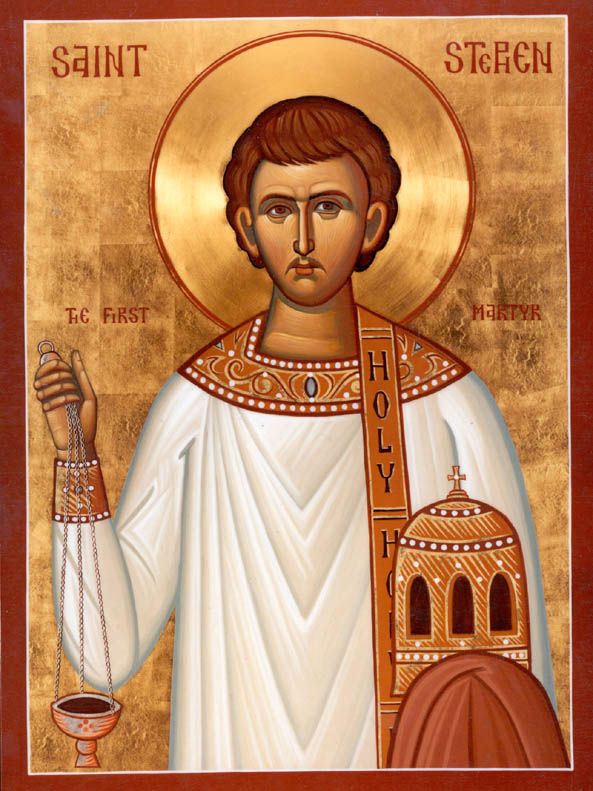Q&A: The name of my parish church is Queen of Martyrs. In a booklet on the history of the parish, it is said that “Our Lady through her great sufferings is the greatest martyr the followers of Christ have ever known.” But Mary never suffered martyrdom, i.e., death for the faith, like Saint Stephen. It seems to be another example of “stretching it a bit”. Can you help explain this title?
Father J. Patrick Gaffney, SMM
I presume that “stretching it a bit” is a synonym for exaggeration. And, yes there can be exaggerations in the field of devotion to Mary. However, they are “false devotions.” For example, paying more attention to the so – called words of Mary culled from alleged apparitions and locutions than to the words of the Scriptures themselves, is not a “true devotion” to the Mother of God.
Is it an exaggeration—a false devotion to call Mary the Queen of Martyrs? Martyr is a Greek word, meaning witness. In the strict sense of the term, martyr means someone who gives supreme testimony, i.e., dies at the hands of those who despise the faith. Tradition (with a small “t”) says that John the Apostle was thrown into a cauldron of boiling oil because he staunchly proclaimed faith in Jesus Christ. Even though he came out looking younger than before, says this tradition, and never actually died for the faith, he still is regarded as a martyr. By undergoing such tortures which would ordinarily kill, he equivalently died for Jesus Christ.
However a contemporary understanding of martyrdom goes beyond the concept of “dying for the faith.” It includes not only those who shed their blood for the faith but also the truly extraordinary witnesses to Jesus Christ, even if their testimony does not include being executed for the faith. It is quite customary to speak of three types of martyrdom:
- Red: through the shedding of blood;
- White: through the rigorous self—sacrifice of virginity and monastic life;
- Green: through the penance of exile because of the faith and thereby witnessing to Christ in a foreign land.
Would it not be consistent to include in this last type of martyrdom all those who bravely and in an extraordinary manner lived the faith in spite of great opposition? They did not lose life itself, but their life of suffering is a greater testimony than instant death for the Lord. It is far more difficult to persevere bravely as a witness to the faith during a lifetime of extraordinary trials than to die for Christ through one chomp of the lion’s teeth.
Some would go so far as to say that the dying of any faithful Christian, even the person who is not being killed out of hatred for the faith, should be called martyrdom since it is the supreme self—offering to the Lord, the highest form of union with Christ in his salvific martyrdom on the Cross. To remain staunchly faithful to Jesus in the midst of the ambiguities and sufferings which are intrinsic to death and so challenge our faith, is that not martyrdom? Only in the broadest sense for each Christian is called upon to be such a “martyr.” Christian dying cannot be called an “extraordinary” witnessing to the Gospel since it is required of all of us.

St. Stephen: Martyr
And it is the intercession of her eternal YES in the name of all creation, that wins for us the strength to die for her Son.
It is evident that from every point of view, Our Lady is the Queen of Martyrs. Mary too suffered so intensely throughout her life and especially at the foot of The Cross that it can be said that she equivalently died for the faith. The Immaculate Conception does not exempt Mary from suffering; rather it actually makes her more sensitive to evil, most especially to hatred for her Son. Her heart, pierced with a sword as Luke tells us, bore sufferings that are beyond our experience. All this because she is the faithful Mother of God. She is the greatest of all martyrs even though her actual death was a “falling asleep” in the Lord. She is also Queen of Martyrs because it is through her YES at the annunciation that there is a Jesus to live for and die for. And it is the intercession of her eternal YES in the name of all creation, that wins for us the strength to die for her Son.
In the contemporary understanding of martyrdom, Mary is even more clearly the Queen of Martyrs. Who so bravely as Mary experienced such extraordinary trials and yet remained faithful in her witness to the Lord? The scriptural portraits of Our Lady reveal that no one ever gave such living testimony to faith in Jesus the Lord as Mary His mother (cf. The infancy narratives of Luke and Matthew. Mk 3:20—35Jn 19:25—27).
And no one so intercedes with her Son so that all His followers may “now and at the hour of our death” be loving, faithful witnesses to the glory of God. No matter how we understand “martyrdom”, Our Lady is clearly the Queen of Martyrs.


